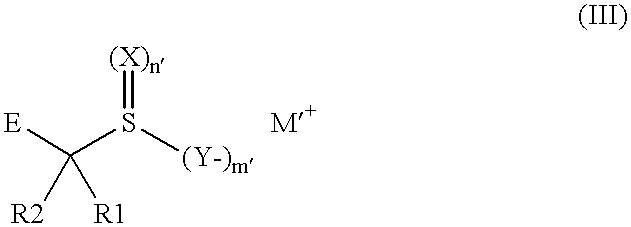Emulsion, material and screen/film system for radiological image formation
- Summary
- Abstract
- Description
- Claims
- Application Information
AI Technical Summary
Benefits of technology
Problems solved by technology
Method used
Image
Examples
Embodiment Construction
While the present invention will hereinafter be described in connection with preferred embodiments thereof, it will be understood that it is not intended to limit the invention to those embodiments.
Emulsion A1-A3 (tabular silver chloroiodide emulsion: comparative examples)
The following solutions were prepared:
5.72 1 of a dispersion medium (C) containing 0.47 moles of sodium chloride, 100 g of inert gelatin and 360 mg of adenine; temperature was established at 55.degree. C. and pH was maintained at a value of 6.0;
a 2.94 molar silver nitrate solution (A);
a solution containing 2.756 moles of sodium chloride, 0.015 moles of potassium iodide and 420 mg of adenin (B1).
A nucleation step was performed by introducing solution A and solution B1 simultaneously in dispersion medium C, both at a flow rate of 70 ml / min, during 30 seconds at a stirring rate of 500 r.p.m. After a physical ripening time of 20 min during which the temperature was raised to 70.degree. C., a first growth step was perfo...
PUM
 Login to View More
Login to View More Abstract
Description
Claims
Application Information
 Login to View More
Login to View More - R&D
- Intellectual Property
- Life Sciences
- Materials
- Tech Scout
- Unparalleled Data Quality
- Higher Quality Content
- 60% Fewer Hallucinations
Browse by: Latest US Patents, China's latest patents, Technical Efficacy Thesaurus, Application Domain, Technology Topic, Popular Technical Reports.
© 2025 PatSnap. All rights reserved.Legal|Privacy policy|Modern Slavery Act Transparency Statement|Sitemap|About US| Contact US: help@patsnap.com



